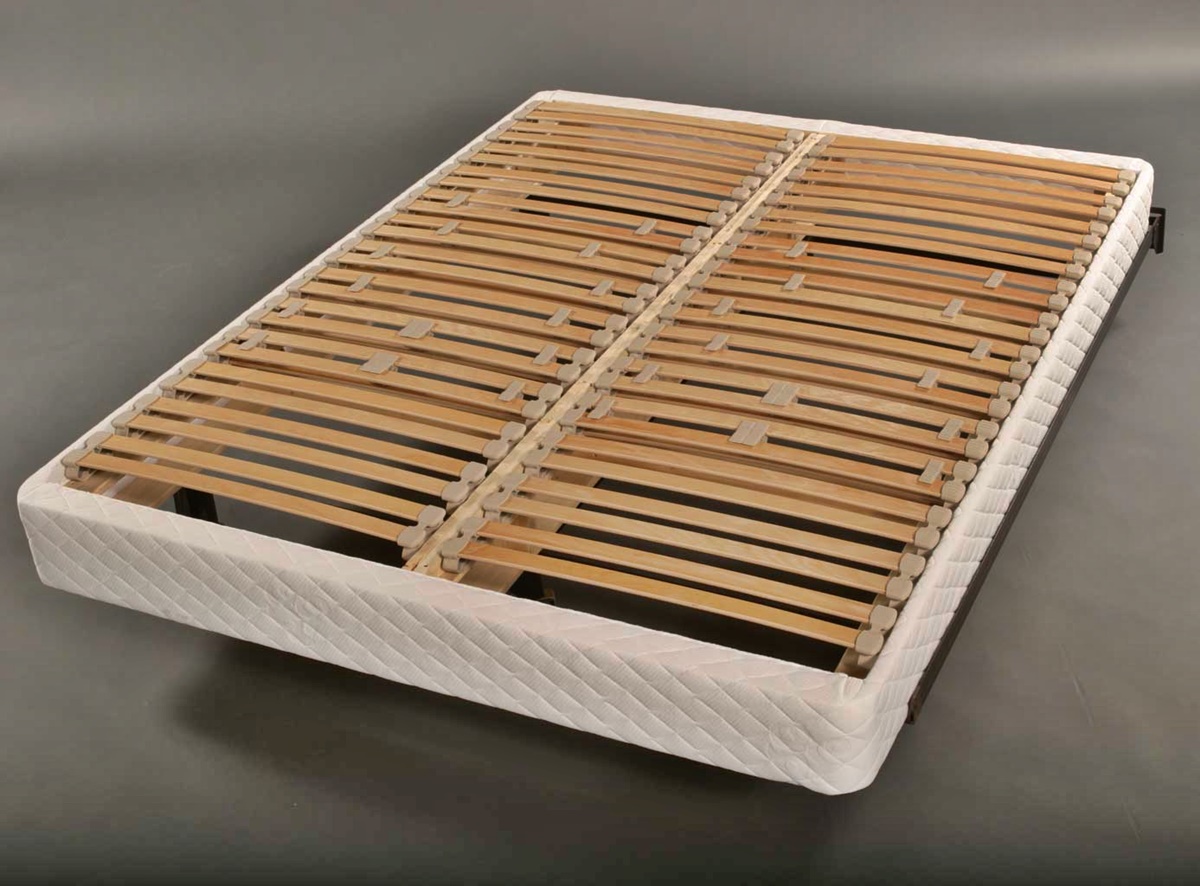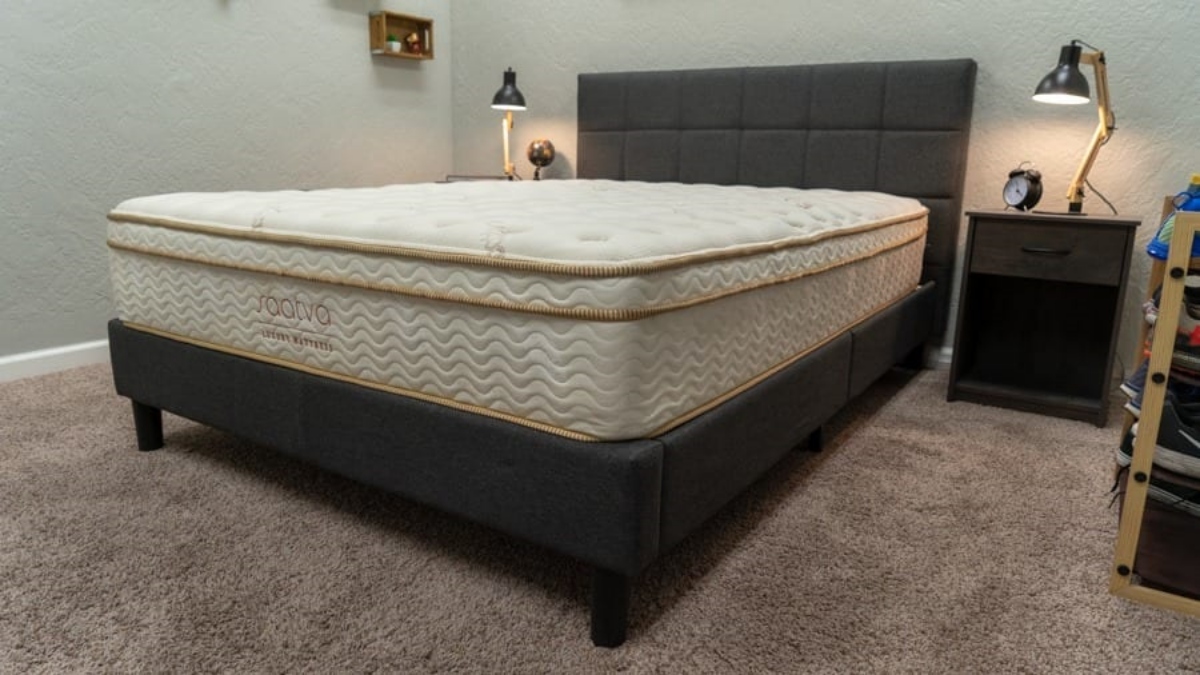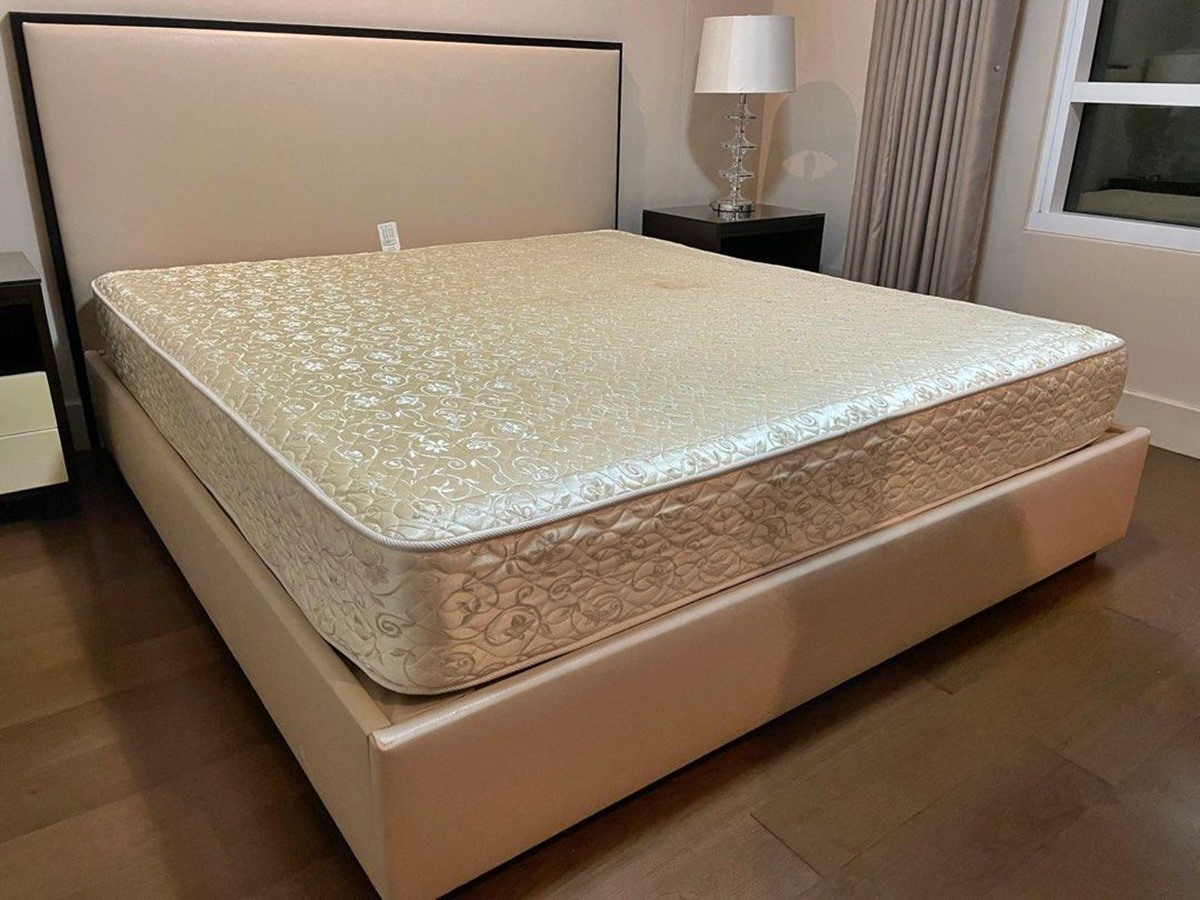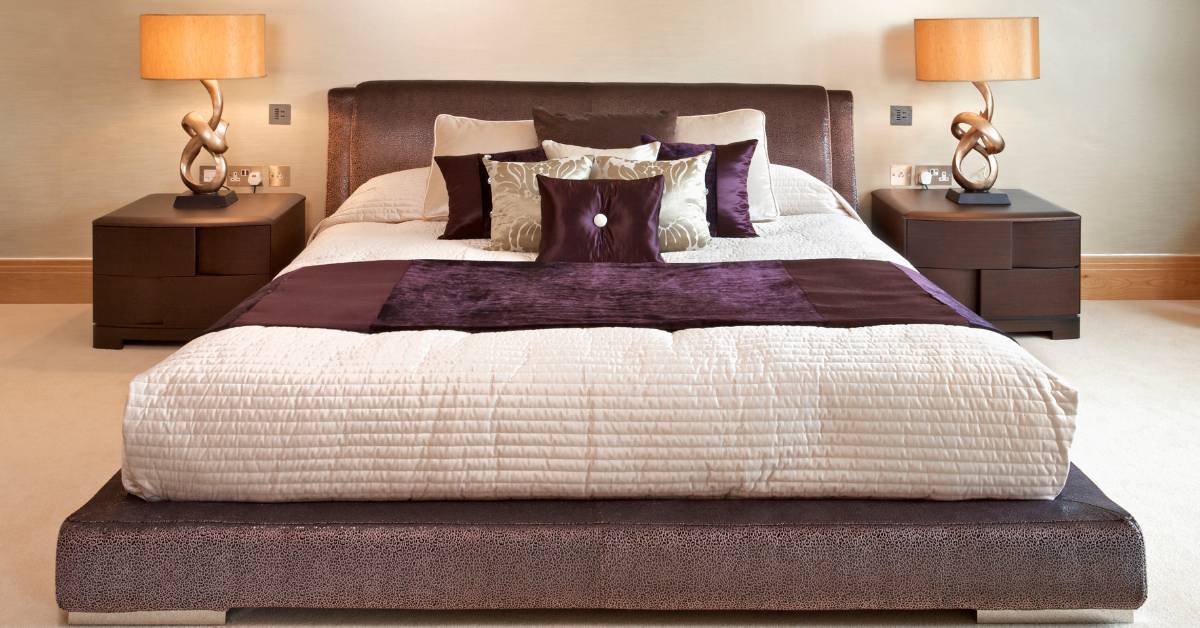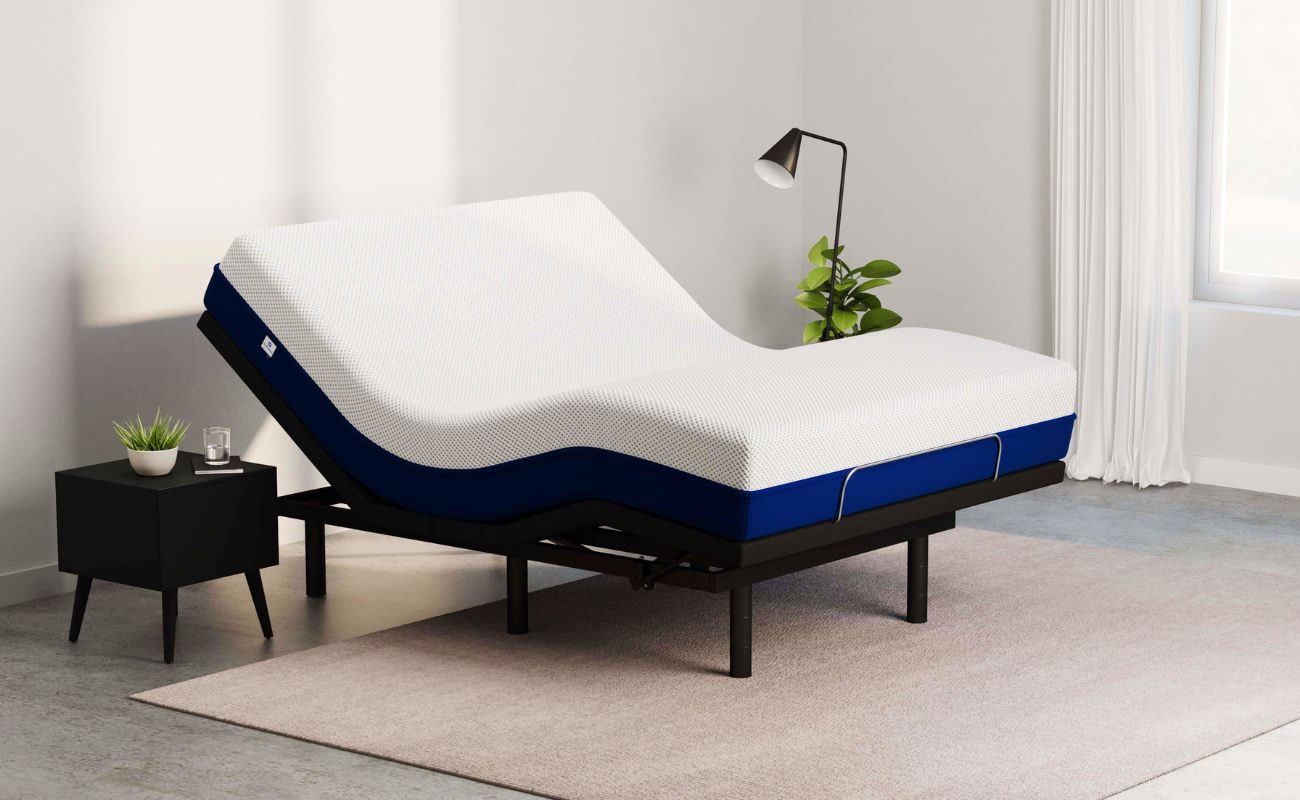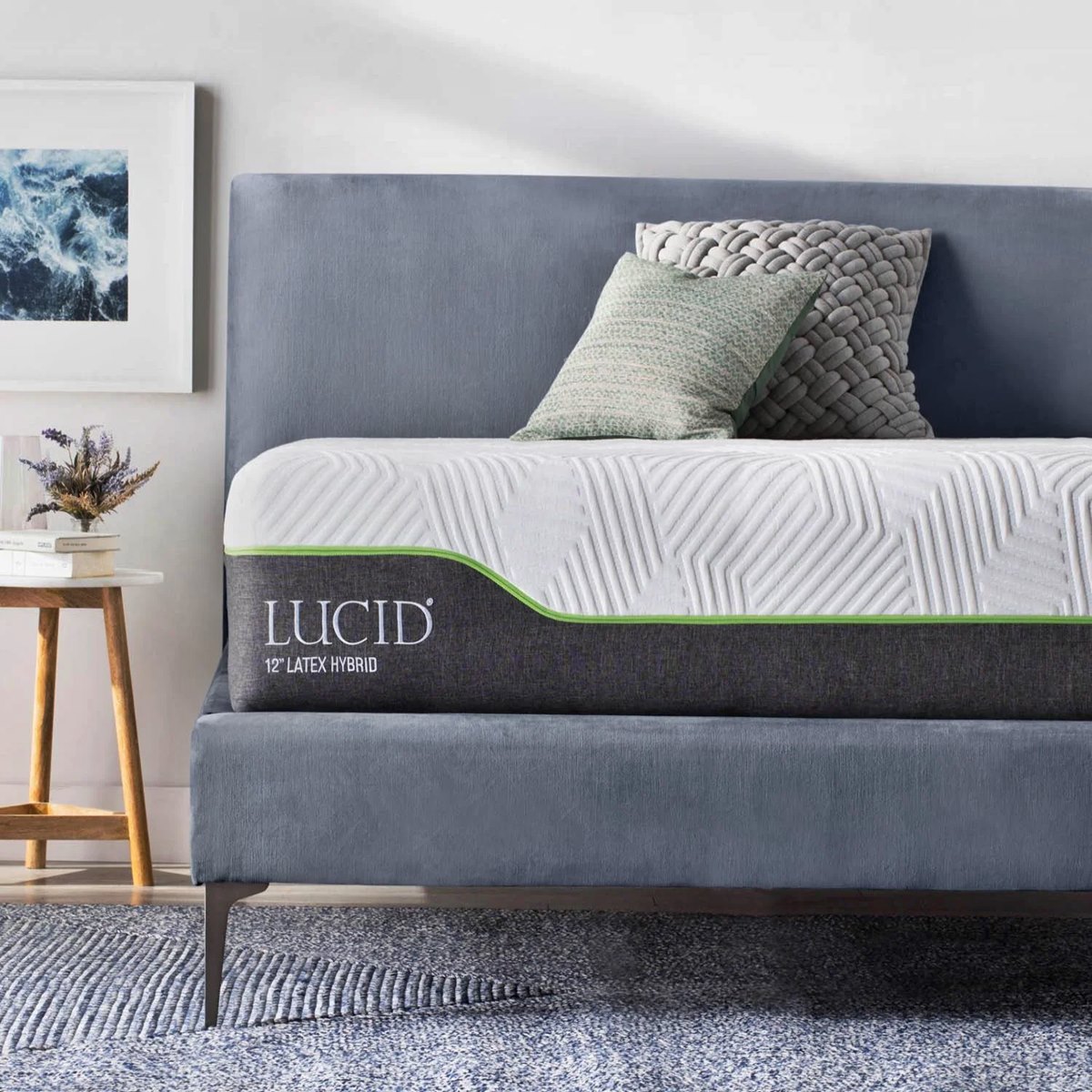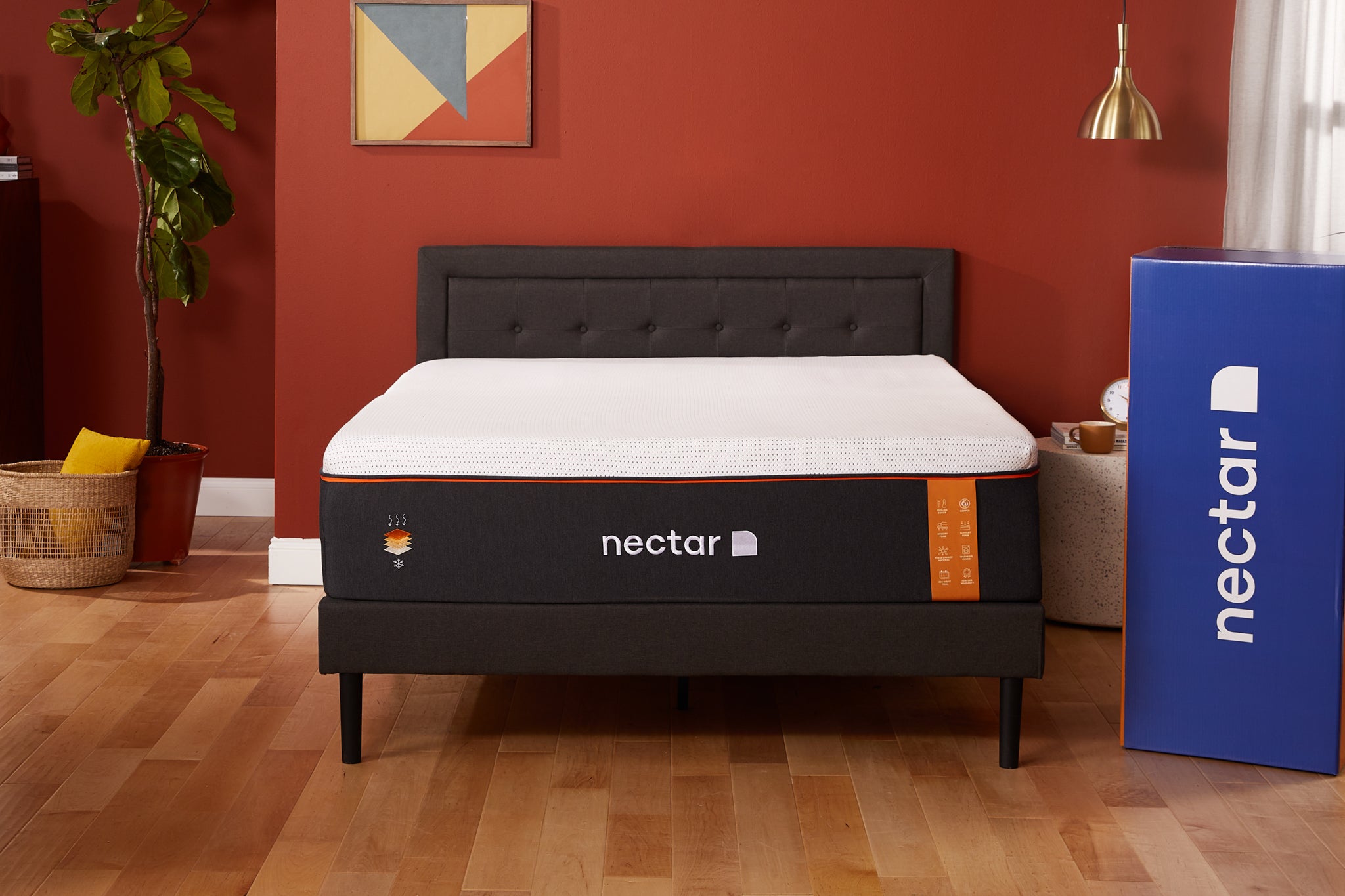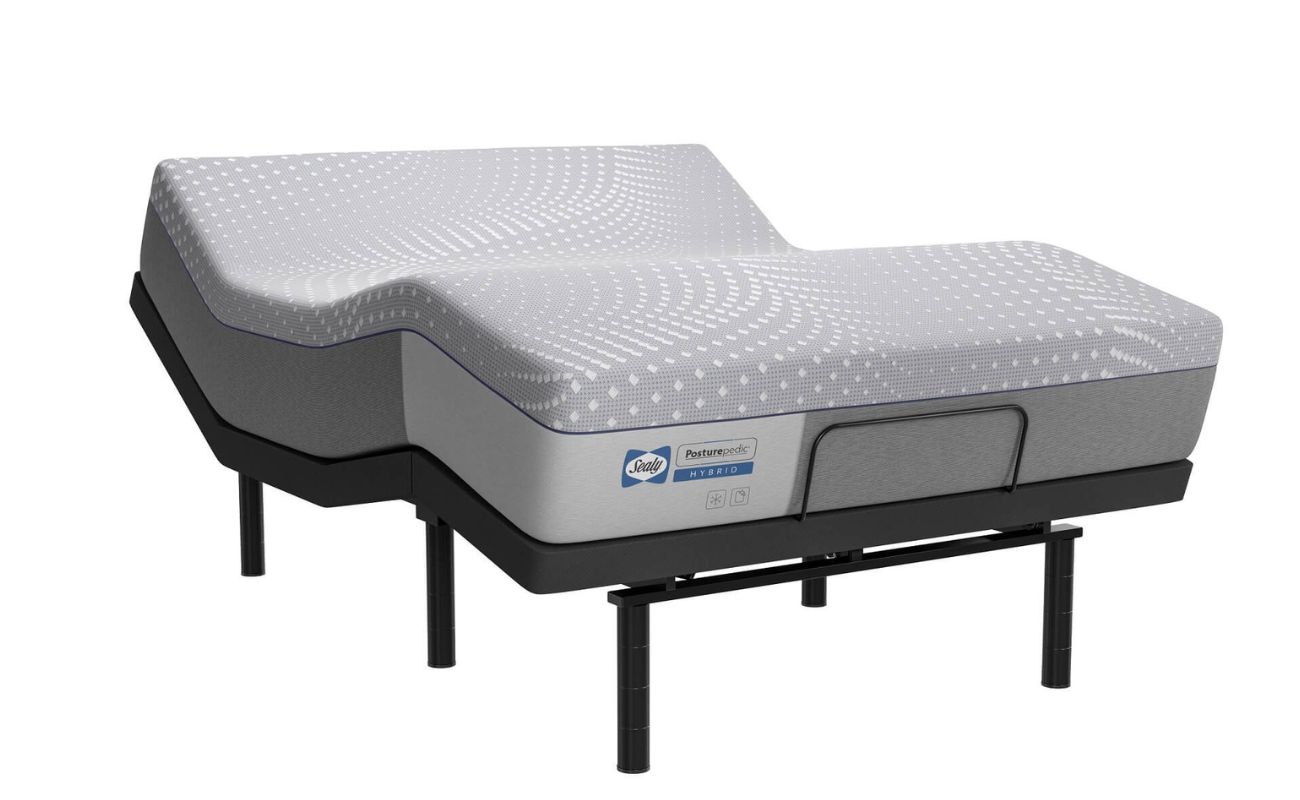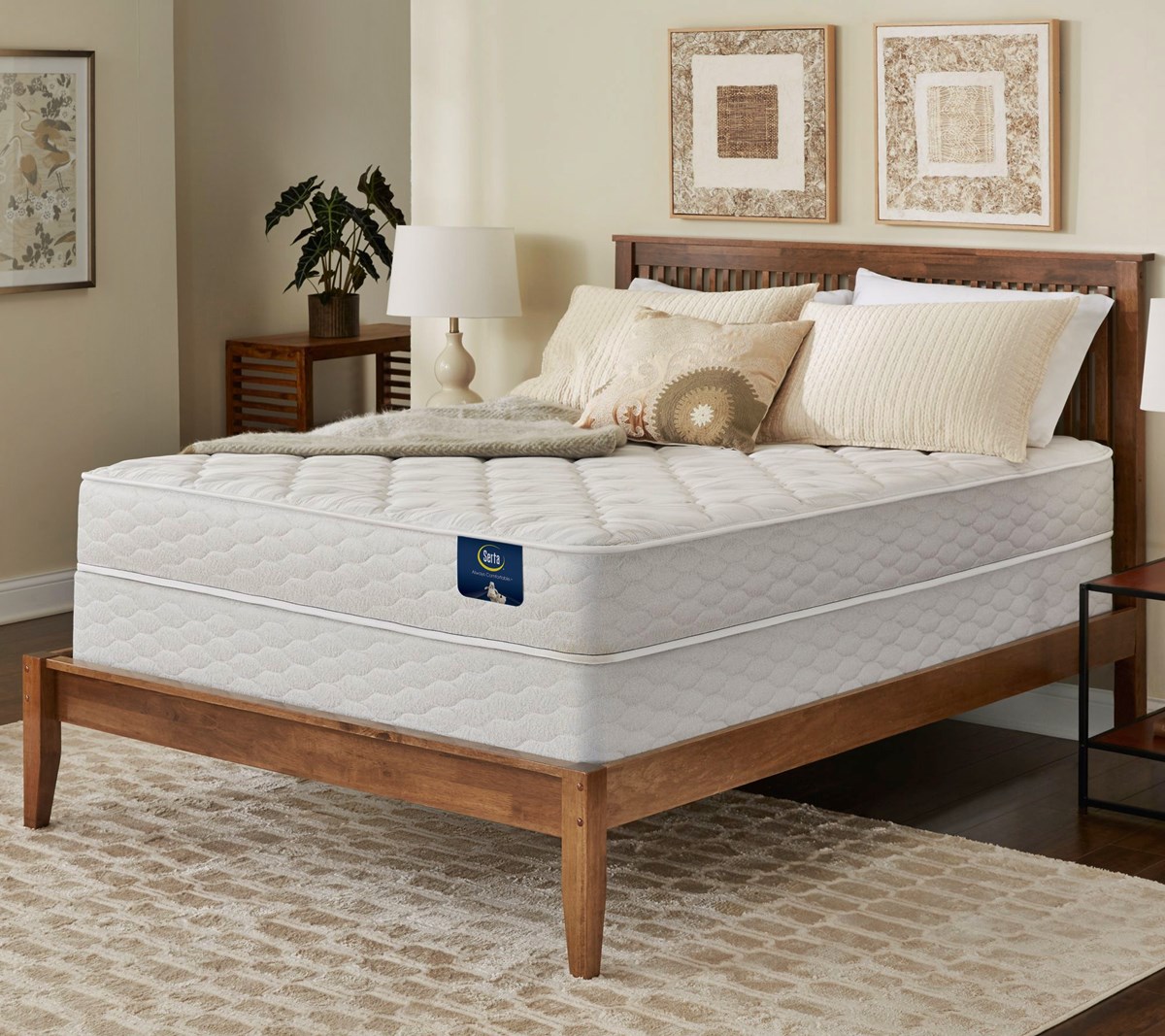Home>Furniture>Bedroom Furniture>What Is An Alternating Pressure Mattress
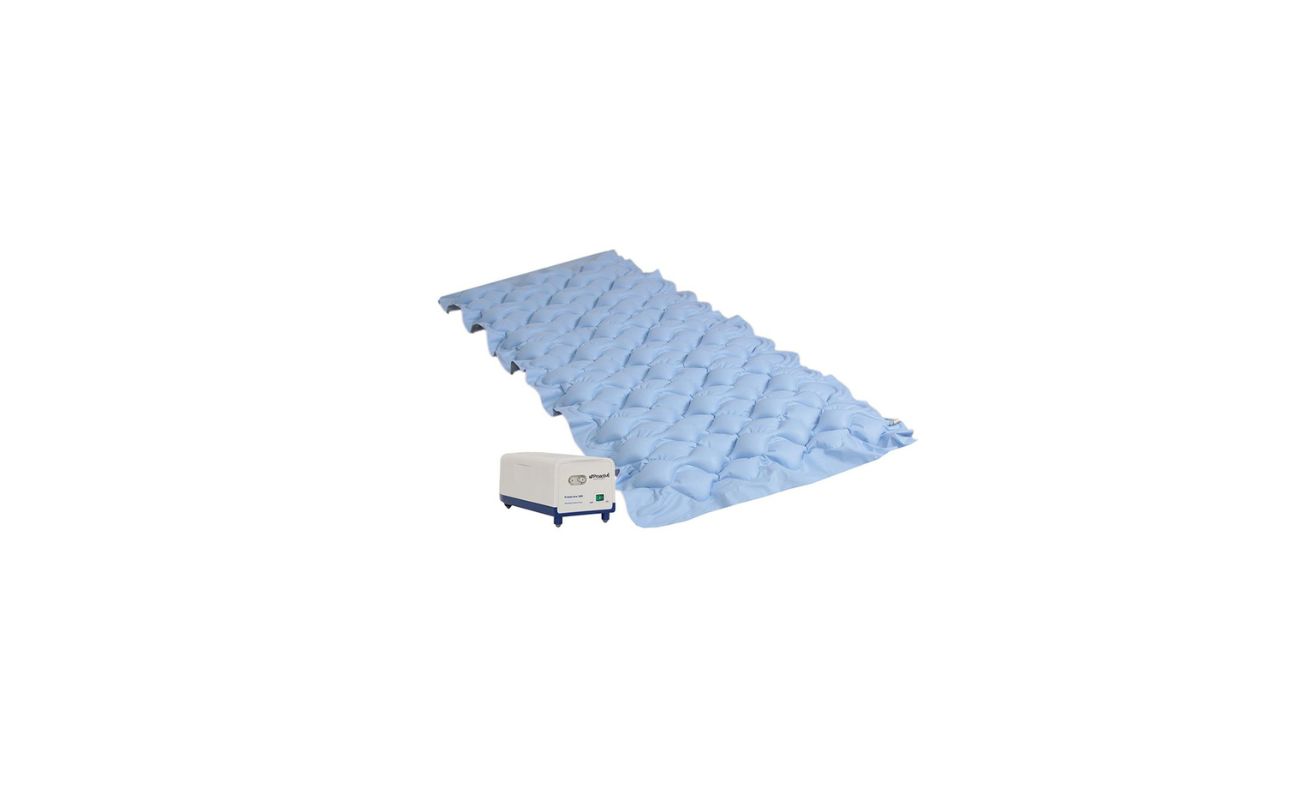

Bedroom Furniture
What Is An Alternating Pressure Mattress
Modified: September 1, 2024
Explore the benefits of an alternating pressure mattress for your bedroom furniture. Improve your sleep and relieve pressure points for ultimate comfort.
(Many of the links in this article redirect to a specific reviewed product. Your purchase of these products through affiliate links helps to generate commission for Storables.com, at no extra cost. Learn more)
Introduction
Welcome to the world of bedroom furniture! When it comes to creating the perfect sanctuary for a good night’s sleep, one essential item that often goes overlooked is the mattress. Choosing the right mattress is crucial for ensuring comfort and proper support, but there are also specialized mattresses available that offer additional benefits. One such mattress is the alternating pressure mattress.
An alternating pressure mattress is a unique type of mattress that can provide numerous benefits, especially for individuals who spend a significant amount of time in bed or who have specific medical conditions. It is designed to alleviate pressure points, promote circulation, and reduce the risk of developing pressure ulcers or bedsores. In this article, we will explore the ins and outs of alternating pressure mattresses, including how they work, the benefits they offer, and who can benefit from using them.
Key Takeaways:
- Alternating pressure mattresses offer dynamic pressure redistribution, promoting circulation and preventing pressure ulcers. They benefit bedridden individuals, those with limited mobility, and those recovering from surgery.
- Considerations when choosing an alternating pressure mattress include risk assessment, user weight, pressure settings, noise level, and maintenance. Consult a healthcare professional for personalized guidance.
Read more: What Is Down Alternative In Pillows
Definition of an Alternating Pressure Mattress
An alternating pressure mattress is a specialized type of mattress that is designed to provide dynamic and customizable pressure relief. It consists of multiple air chambers or cells that inflate and deflate in a cyclical pattern, continuously adjusting the distribution of pressure on the body. This dynamic pressure redistribution helps to prevent prolonged pressure on specific areas, reducing the risk of pressure ulcers or bedsores.
The mattress is typically made of durable materials such as PVC or nylon, which are resistant to punctures and leaks. It is equipped with an air pump or compressor that controls the inflation and deflation of the air cells. The user can adjust the pressure settings of the mattress based on their individual needs and preferences.
Alternating pressure mattresses are commonly used in healthcare settings, such as hospitals, nursing homes, and rehabilitation centers, to provide optimal patient care. However, they are also suitable for use in home settings, particularly for individuals who are bedridden, have limited mobility, or are at risk of developing pressure ulcers.
It is essential to note that alternating pressure mattresses should not be confused with traditional air mattresses or adjustable mattresses. While both types of mattresses involve air-filled components, the key distinction lies in the dynamic pressure redistribution mechanism of alternating pressure mattresses.
How Does an Alternating Pressure Mattress Work?
An alternating pressure mattress works by utilizing a system of air chambers or cells that inflate and deflate in a sequential pattern. This cyclic inflation and deflation create a constant shifting of pressure points, ensuring that no single area of the body remains under prolonged pressure.
The mattress is connected to an air pump or compressor, which controls the airflow to the individual air cells. The pump is responsible for inflating and deflating the cells in a specific sequence, typically on a timed cycle. This cycle can vary depending on the brand and model of the mattress, but it usually ranges from every 5 to 10 minutes.
When the alternating pressure mattress is inflated, the air cells provide support and cushioning to the body. As the cells gradually deflate, the pressure is shifted to different areas, allowing blood flow to be restored and reducing the risk of tissue damage caused by prolonged pressure on one spot.
Some alternating pressure mattresses also offer adjustable pressure settings. This allows the user to customize the level of firmness or softness according to their comfort needs. Higher pressure settings provide more support and stability, while lower pressure settings create a softer and more cushioned surface.
The alternating pressure mechanism of these mattresses encourages blood circulation and lymphatic fluid movement, which can help to prevent the development of pressure ulcers or bedsores. By continuously redistributing the pressure on the body, these mattresses promote healthier skin integrity and overall comfort.
It’s important to note that alternating pressure mattresses require a power source to operate, as they rely on the air pump or compressor to cyclically inflate and deflate the air cells. Most mattresses come with a quiet and efficient pump that can be placed near the bed or mounted on the bed frame for convenience.
Overall, the dynamic pressure redistribution provided by an alternating pressure mattress helps to alleviate pressure points, promote blood circulation, reduce the risk of skin breakdown, and enhance overall comfort for individuals who spend extended periods of time in bed.
Benefits of Using an Alternating Pressure Mattress
Using an alternating pressure mattress offers a range of benefits for individuals who are at risk of developing pressure ulcers or bedsores, as well as those who require extended bed rest or have certain medical conditions. Here are some of the key benefits:
- Pressure Relief: The primary benefit of an alternating pressure mattress is the effective relief of pressure on the body. By continuously redistributing pressure, it helps to prevent the formation of pressure points and reduces the risk of developing painful and potentially dangerous ulcers or bedsores.
- Improved Circulation: By alternating the pressure on different areas of the body, these mattresses promote healthy blood circulation. This helps to ensure that oxygen and nutrients are delivered to the tissues, while waste products and toxins are efficiently removed. Improved circulation can enhance healing and overall tissue health.
- Pain Management: Individuals who experience chronic pain, such as those with arthritis or fibromyalgia, can find relief by using an alternating pressure mattress. The dynamic pressure redistribution helps to alleviate pressure on sensitive areas, reducing discomfort and improving sleep quality.
- Enhanced Comfort: The cushioning and support provided by an alternating pressure mattress can significantly improve overall comfort during periods of extended bed rest. It creates a soft and gentle surface, reducing the risk of discomfort, numbness, or stiffness associated with lying on a static mattress for extended periods.
- Convenience and Customization: Many alternating pressure mattresses come with adjustable pressure settings, allowing users to customize the firmness level according to their individual comfort needs. This ensures personalized support and maximum satisfaction.
- Easy Maintenance: Alternating pressure mattresses are typically made of durable and easy-to-clean materials. They are designed to be water-resistant and anti-microbial, making them easy to maintain and keep hygienic.
- Wide Range of Applications: While these mattresses are commonly used in healthcare settings, such as hospitals and nursing homes, they are also suitable for home use. They can benefit individuals who are bedridden, recovering from surgery, have limited mobility, or experience pressure-related issues.
It is important to consult with a healthcare professional or specialist to determine if an alternating pressure mattress is appropriate for your specific needs. They can provide guidance and help you select the right mattress based on your condition and requirements.
Who Can Benefit from an Alternating Pressure Mattress?
An alternating pressure mattress can provide significant benefits for a wide range of individuals who may be at risk of developing pressure ulcers or bedsores, or who require extended periods of bed rest. Here are some examples of who can benefit from using an alternating pressure mattress:
- Bedridden Individuals: Those who are bedridden, either due to illness, injury, or recovery from surgery, can benefit greatly from an alternating pressure mattress. The dynamic pressure redistribution helps to relieve pressure on specific areas, minimizing the risk of developing pressure ulcers.
- Elderly Individuals: The elderly are often more prone to skin breakdown and pressure ulcers due to thinner skin, decreased mobility, and underlying health conditions. An alternating pressure mattress can provide the necessary support and pressure relief to prevent ulcers and improve overall comfort.
- Individuals with Limited Mobility: People with limited mobility, such as those with paralysis or mobility impairments, are at higher risk of developing pressure ulcers. An alternating pressure mattress can help alleviate pressure points and promote circulation for this population, reducing the chances of skin breakdown.
- Pain Management: Individuals experiencing chronic pain, such as arthritis or fibromyalgia, can find relief with an alternating pressure mattress. The dynamic pressure redistribution can help alleviate pressure on sensitive areas and reduce pain, improving sleep quality and comfort.
- Recovery from Surgery: After a surgical procedure, patients often require extended periods of bed rest to facilitate healing. An alternating pressure mattress can provide support, help prevent complications, and promote better recovery by reducing pressure and enhancing circulation.
- Individuals with Circulatory Issues: Those with compromised circulation, such as individuals with diabetes or peripheral vascular disease, can benefit from an alternating pressure mattress. By promoting blood flow and preventing prolonged pressure, these mattresses can help minimize the risk of skin breakdown and assist in wound healing.
- Long-Term Care Residents: In long-term care facilities, where residents may have limited mobility, an alternating pressure mattress is often used as a preventive measure against pressure ulcers. The continuous pressure relief and support provided by these mattresses help to maintain skin integrity and overall comfort.
It is worth noting that individuals with certain medical conditions or unique circumstances should consult with a healthcare professional or specialist to determine if an alternating pressure mattress is suitable for their specific needs. The healthcare provider can assess the individual’s condition, recommend appropriate features, and provide guidance on the proper use of the mattress.
An alternating pressure mattress is designed to prevent pressure ulcers by constantly changing the pressure points on the body. This can be beneficial for individuals who are bedridden or have limited mobility.
Read more: What Are The Alternatives To Astro Turf?
Types of Alternating Pressure Mattresses
Alternating pressure mattresses come in various types, each designed to cater to specific needs and preferences. Here are some common types of alternating pressure mattresses:
- Standard Alternating Pressure Mattress: This type of mattress features a series of air cells that inflate and deflate in a cyclic pattern. It offers basic pressure relief and is suitable for individuals at low to moderate risk of developing pressure ulcers.
- Bariatric Alternating Pressure Mattress: Bariatric mattresses are designed to accommodate individuals who weigh more than the average person. They feature reinforced materials and higher weight capacities to provide effective pressure relief for heavier individuals.
- Low Air Loss Alternating Pressure Mattress: Low air loss mattresses have small vented air cells that allow a controlled airflow. This helps to regulate body temperature, reduce moisture buildup, and enhance overall comfort. These mattresses are beneficial for individuals who are prone to sweating or require additional airflow.
- Microclimate Alternating Pressure Mattress: Microclimate mattresses combine the features of low air loss and alternating pressure technologies. They have ventilation systems that help to manage heat and moisture, ensuring a dry and comfortable sleeping surface.
- Hybrid Alternating Pressure Mattress: Hybrid mattresses combine alternating pressure technology with other mattress materials, such as foam or gel inserts. These mattresses offer a combination of pressure relief and comfort, ideal for individuals who require both support and cushioning.
- Overlay Alternating Pressure Mattress: Overlay mattresses are designed to be placed on top of an existing mattress. They provide an alternating pressure system while adding an extra layer of comfort and pressure relief.
- Pumpless Alternating Pressure Mattress: Pumpless or self-inflating mattresses do not require an external pump or power source. They feature specially designed foam or gel layers that automatically adjust to the user’s movements, providing pressure relief without the need for inflation.
- Customizable Alternating Pressure Mattress: Some alternating pressure mattresses offer customization options, allowing users to adjust the pressure settings, firmness, or position of the air cells to meet their individual comfort needs.
When choosing the right type of alternating pressure mattress, it is crucial to consider factors such as the user’s weight, level of risk for pressure ulcers, specific medical needs, and personal preferences. Consulting with a healthcare professional or specialist can assist in selecting the most suitable mattress for individual requirements.
Important Considerations when Choosing an Alternating Pressure Mattress
When selecting an alternating pressure mattress, there are several important factors to consider to ensure you choose the right one for your needs. Take these considerations into account before making your final decision:
- Risk Assessment: Consult with a healthcare professional to assess the level of risk for pressure ulcers or bedsores. This will help determine the appropriate type and features of the alternating pressure mattress.
- User Weight and Size: Consider the weight capacity and dimensions of the mattress to ensure it can adequately support the user. Bariatric individuals may require a specialized bariatric alternating pressure mattress with a higher weight capacity.
- Pressure Settings: Look for a mattress that offers adjustable pressure settings. This allows you to customize the level of firmness or softness based on your comfort needs, providing personalized pressure relief.
- Noise Level: Consider the noise level of the air pump or compressor that inflates and deflates the air cells. Opt for a mattress with a quiet pump to minimize disruptions during sleep.
- Durability and Maintenance: Choose a mattress made of durable materials, such as PVC or nylon, that are resistant to punctures and leaks. Also, consider the ease of maintenance and cleaning, as the mattress should be kept in a hygienic condition.
- Cover Material: Look for a mattress cover that is breathable, moisture-resistant, and easy to clean. The cover should be designed to prevent the buildup of heat and moisture, promoting a comfortable sleeping environment.
- Power Source: Determine whether the mattress requires an external power source, such as an electrical outlet for the air pump. Consider the availability of power sources in the intended location of use.
- Additional Features: Some mattresses may offer additional features like low air loss, microclimate management, or foam/gel inserts for enhanced comfort. Assess whether these features are necessary for your specific needs.
- Budget: Set a budget and explore different options within your price range. Remember, while price is important, it should not be the sole determining factor. Focus on the mattress’s quality, features, and suitability for your needs.
By considering these factors, you can make an informed decision and select an alternating pressure mattress that meets your specific requirements, providing optimal comfort, pressure relief, and support.
How to Properly Use an Alternating Pressure Mattress
To maximize the benefits and ensure the proper functioning of an alternating pressure mattress, it is essential to follow these guidelines for proper use:
- Set Up the Mattress: Begin by placing the alternating pressure mattress on a sturdy bed frame or base. Ensure that the mattress is properly aligned and securely fastened to prevent any shifting during use.
- Connect the Air Pump: Connect the air pump or compressor to the mattress according to the manufacturer’s instructions. Ensure that the connections are secure to maintain proper airflow.
- Adjust the Pressure Settings: If the mattress offers adjustable pressure settings, set it to the desired level based on your comfort preferences and healthcare professional’s recommendations.
- Position the User: Assist the user in getting onto the mattress and ensure they are positioned comfortably in the center of the mattress. Make sure there are no wrinkles or creases in the sheets or bedding, as they can inhibit the proper functioning of the air cells.
- Regular Maintenance: Check the air cells, pump, and connections regularly to ensure they are clean and in good working condition. Follow the manufacturer’s guidelines for cleaning and maintenance to keep the mattress clean and hygienic.
- Use a Mattress Cover: Consider using a specialized alternating pressure mattress cover. The cover should be breathable, moisture-resistant, and easily removable for washing. It helps to protect the mattress and maintain a clean sleeping surface.
- Monitor the User: Regularly check on the user to ensure their comfort and well-being. Make adjustments to the pressure settings or position if necessary, and communicate with the user about their comfort level and any concerns they may have.
- Follow Usage Guidelines: Adhere to the recommended usage guidelines provided by the manufacturer. This includes respecting weight limits, following the recommended cycle times, and understanding any specific instructions related to the mattress model.
- Consult Healthcare Professional: If you have any questions or concerns about using the alternating pressure mattress, consult with a healthcare professional or specialist. They can provide guidance on its proper use based on your individual needs and health condition.
Remember, proper use and maintenance are crucial for ensuring the longevity and effectiveness of the alternating pressure mattress. By following these guidelines, you can make the most of its pressure relief benefits and promote overall comfort and well-being.
Potential Risks or Side Effects of Using an Alternating Pressure Mattress
While alternating pressure mattresses are generally safe to use and offer numerous benefits, there are some potential risks and side effects to be aware of. Understanding these risks can help you make an informed decision and take necessary precautions:
- Skin Irritation: In rare cases, individuals may experience skin irritation or redness due to pressure or friction caused by the alternating pressure mattress. Regular monitoring of the skin and ensuring proper positioning and padding is important to prevent skin breakdown.
- Discomfort or Uneasiness: Some individuals may find the sensation of the alternating pressure mattress uncomfortable or unfamiliar at first. It may take time for the user to adjust to the cyclic inflation and deflation of the air cells.
- Issues with Power Source: If the alternating pressure mattress requires an external power source, there is a risk of power interruptions or equipment malfunctions. It is important to have a backup power source or contingency plan in place to ensure continuous pressure relief.
- Noise: The air pump or compressor that inflates and deflates the air cells of the mattress can produce noise. This may cause discomfort or disrupt sleep for some individuals. Opting for a mattress with a quieter pump or using noise-cancelling techniques can help mitigate this issue.
- Contradictions for Certain Medical Conditions: While alternating pressure mattresses are generally suitable for a wide range of individuals, there may be specific medical conditions or situations where their use is contraindicated. Individuals with certain respiratory conditions, open wounds, or unstable fractures may need to consult a healthcare professional before using the mattress.
- Maintenance and Hygiene: Regular cleaning and maintenance are essential to keep the alternating pressure mattress in good condition. Failure to maintain cleanliness and follow proper maintenance procedures may lead to the accumulation of dirt, allergens, or bacteria, increasing the risk of infection or skin issues.
If you experience any discomfort, skin irritation, or other unexpected side effects while using an alternating pressure mattress, it is recommended to discontinue use and consult with a healthcare professional for further evaluation and guidance.
Remember, the benefits of using an alternating pressure mattress often outweigh the potential risks. However, it is crucial to use the mattress appropriately, follow the manufacturer’s instructions, and seek proper medical advice when needed.
Conclusion
Choosing the right mattress is vital for creating a comfortable sleep environment, and an alternating pressure mattress offers unique benefits for individuals who require pressure relief and support. By utilizing its dynamic pressure redistribution technology, an alternating pressure mattress can help prevent pressure ulcers, improve circulation, and enhance overall comfort.
Whether you are recovering from surgery, experiencing chronic pain, or require extended bed rest, an alternating pressure mattress can provide the necessary support and pressure relief to promote healing and prevent complications. It is particularly beneficial for individuals who are bedridden, have limited mobility, or are at risk of developing pressure ulcers or bedsores.
When selecting an alternating pressure mattress, it is important to consider factors such as weight capacity, adjustability, noise level, and maintenance requirements. Consulting with a healthcare professional or specialist can assist in choosing the right mattress that meets your specific needs and preferences.
While there are potential risks and side effects associated with the use of alternating pressure mattresses, these are generally minimal when the mattress is used properly and in accordance with the manufacturer’s guidelines. Regular monitoring of the user’s skin, proper positioning, and adherence to maintenance protocols are essential in mitigating these risks.
In conclusion, an alternating pressure mattress offers a supportive, pressure-relieving, and comfortable sleep surface for individuals who require additional care and attention. By providing dynamic pressure redistribution, these mattresses can help improve overall well-being and contribute to a healthier and more restful sleep experience.
Remember to always consult with a healthcare professional, follow usage guidelines, and prioritize proper maintenance to optimize the benefits and longevity of your alternating pressure mattress.
Frequently Asked Questions about What Is An Alternating Pressure Mattress
Was this page helpful?
At Storables.com, we guarantee accurate and reliable information. Our content, validated by Expert Board Contributors, is crafted following stringent Editorial Policies. We're committed to providing you with well-researched, expert-backed insights for all your informational needs.

